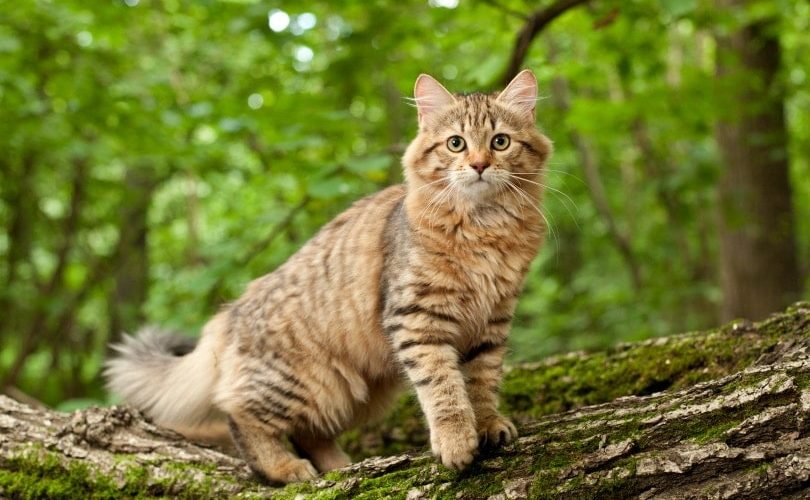Throughout history, cats have held a unique and complex place in human societies. In medieval Europe, their symbolic role was deeply intertwined with the cultural, religious, and social norms of the time. While some saw cats as valuable companions and protectors, others viewed them with suspicion and fear, often associating them with witchcraft and the supernatural. This article explores the multifaceted symbolism of cats in medieval Europe and their impact on society.
Cats as Protectors and Pest Controllers
In medieval Europe, cats were indispensable as pest controllers. They were valued for their ability to hunt rodents, which were not only a nuisance but also carriers of deadly diseases like the Black Plague. Cats’ natural hunting instincts made them essential in households, barns, and granaries, where they helped protect food supplies from infestation.
Beyond their practical utility, cats symbolized cleanliness and order. Their presence in homes was thought to ward off not only physical pests but also spiritual impurities. Cats were often seen as guardians of the hearth, a central symbol of family and domestic life. Their ability to keep the home free of vermin earned them a place of respect, especially among rural communities.
The Association with Superstition and Witchcraft
Despite their practical value, cats were also shrouded in superstition during the medieval period. Black cats, in particular, became symbols of misfortune and evil. This association stemmed from their nocturnal nature and mysterious behavior, which made them seem otherworldly to a society deeply influenced by religious dogma and fear of the unknown.
The link between cats and witchcraft became especially prominent in the later Middle Ages. Cats were often believed to be witches’ familiars, creatures that assisted in magical practices. These beliefs were fueled by religious authorities who sought to root out heresy and pagan practices. Witches were thought to shape-shift into cats or use them to spy on their enemies, further solidifying the association between cats and the supernatural.
The fear of cats reached its peak during the Inquisition and witch trials. Many cats, particularly black ones, were killed in an effort to purge communities of supposed evil influences. Ironically, this mass extermination of cats may have contributed to the spread of the Black Plague, as the reduction in cat populations allowed rat infestations to grow unchecked.
Cats in Religious Symbolism
The religious climate of medieval Europe had a significant influence on how cats were perceived. Christianity, which dominated the cultural landscape, often portrayed cats in a negative light. They were associated with pagan religions and seen as symbols of lust, deceit, and heresy.
However, not all religious views of cats were negative. In some Christian traditions, cats were seen as protectors. Monasteries often kept cats to guard their precious manuscripts from rodents. This practical role gave cats a subtle but important presence in religious life, even as broader cultural attitudes toward them remained conflicted.

Cats in Folklore and Literature
Cats frequently appeared in medieval folklore and literature, reflecting the ambivalent attitudes of the time. In some tales, cats were portrayed as cunning and deceitful, embodying traits that were both admired and feared. They often played the role of tricksters, outsmarting humans and other animals alike.
For example, in Aesop’s fables, which were widely circulated during the medieval period, cats were depicted as clever and resourceful. These stories reinforced the perception of cats as intelligent but unpredictable creatures, capable of both loyalty and betrayal.
Cats also appeared in medieval bestiaries, which were collections of animal descriptions imbued with moral and religious symbolism. In these texts, cats were often described as vigilant hunters, their behavior serving as a metaphor for spiritual watchfulness. At the same time, their association with darkness and mystery was used to caution against sin and temptation.
The Role of Cats in Art and Iconography
Medieval art and iconography often featured cats, albeit in contrasting roles. In religious art, cats were sometimes depicted as symbols of treachery and sin. For instance, they might appear in scenes of the Last Supper, lurking under the table to represent Judas’s betrayal.
On the other hand, cats also appeared in more positive contexts, such as domestic scenes that celebrated family life. These depictions highlighted their role as companions and protectors, emphasizing their dual nature in medieval symbolism.
Regional Variations in Cat Symbolism
The symbolic role of cats varied across different regions of medieval Europe. In Celtic traditions, cats were often associated with the mystical and supernatural. They were believed to be guardians of the Otherworld, possessing knowledge of realms beyond human comprehension.
In contrast, in southern Europe, where the influence of ancient Roman culture persisted, cats retained some of their earlier associations with fertility and domesticity. The Roman goddess Diana, who was linked to cats, continued to influence folk beliefs in these regions, albeit in a Christianized form.
The Legacy of Cats in Medieval Europe
The complex symbolism of cats in medieval Europe has left a lasting legacy. While many of the superstitions surrounding cats have faded, their association with mystery and independence remains a defining aspect of their cultural image. Modern depictions of cats as both loyal companions and enigmatic creatures can be traced back to the ambivalent attitudes of the medieval period.
The persecution of cats during the Middle Ages also serves as a cautionary tale about the dangers of superstition and fear. It highlights how societal attitudes, shaped by religion and cultural beliefs, can have far-reaching consequences for both humans and animals.

Conclusion
Cats in medieval Europe were symbols of both practicality and mystery, embodying the dualities of protection and danger, loyalty and betrayal. Their role in society was shaped by the cultural, religious, and social dynamics of the time, reflecting humanity’s complex relationship with these fascinating creatures.
As we look back on the symbolic role of cats in medieval Europe, we gain insight into the ways in which animals are woven into the fabric of human culture. Cats, with their enduring allure and mystique, continue to captivate our imagination, just as they did centuries ago.
